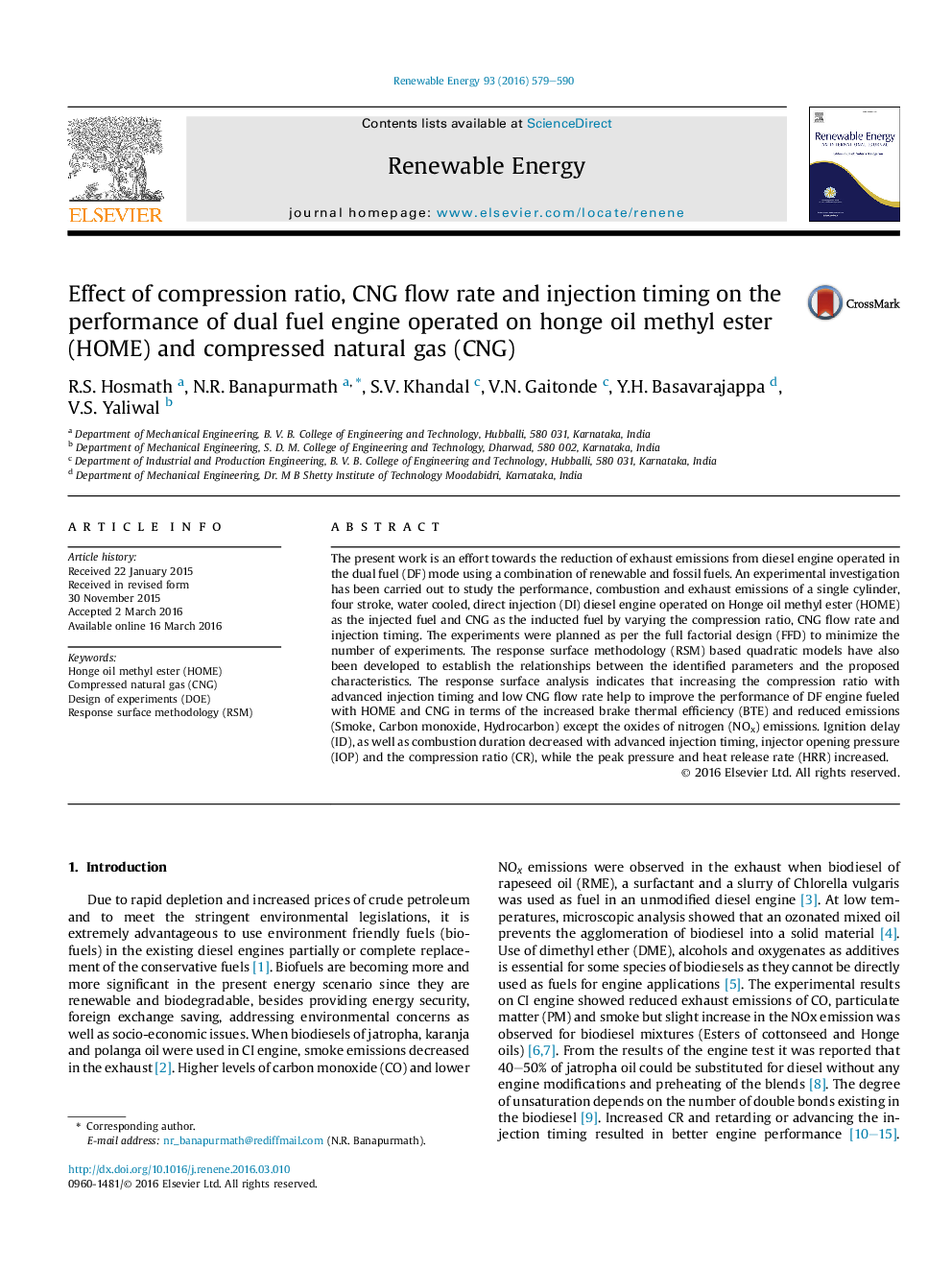| Article ID | Journal | Published Year | Pages | File Type |
|---|---|---|---|---|
| 299791 | Renewable Energy | 2016 | 12 Pages |
•Effects of CR, CNG flow rate and IT on DF engine is reported.•Experiments planned as per FFD and RSM models to analyse effects of proposed characteristics.•Increasing CR, advancing IT increases the BTE and emissions of smoke, HC and CO decreases, while NOx, PP and HRR increases.
The present work is an effort towards the reduction of exhaust emissions from diesel engine operated in the dual fuel (DF) mode using a combination of renewable and fossil fuels. An experimental investigation has been carried out to study the performance, combustion and exhaust emissions of a single cylinder, four stroke, water cooled, direct injection (DI) diesel engine operated on Honge oil methyl ester (HOME) as the injected fuel and CNG as the inducted fuel by varying the compression ratio, CNG flow rate and injection timing. The experiments were planned as per the full factorial design (FFD) to minimize the number of experiments. The response surface methodology (RSM) based quadratic models have also been developed to establish the relationships between the identified parameters and the proposed characteristics. The response surface analysis indicates that increasing the compression ratio with advanced injection timing and low CNG flow rate help to improve the performance of DF engine fueled with HOME and CNG in terms of the increased brake thermal efficiency (BTE) and reduced emissions (Smoke, Carbon monoxide, Hydrocarbon) except the oxides of nitrogen (NOx) emissions. Ignition delay (ID), as well as combustion duration decreased with advanced injection timing, injector opening pressure (IOP) and the compression ratio (CR), while the peak pressure and heat release rate (HRR) increased.
